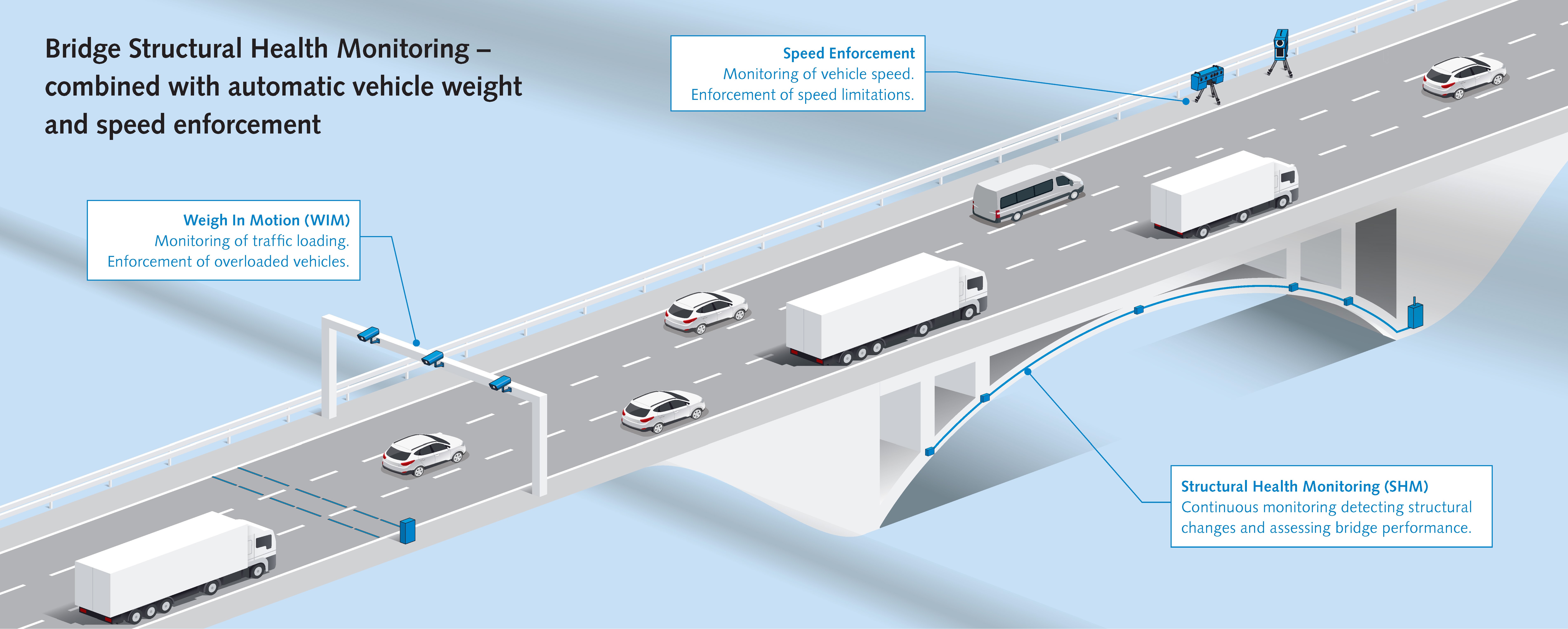


Improving Infrastructure Security: Bridge Monitoring's Significance Bridges connect communities and promote global trade, making them essential parts of our transportation network. But with time, a variety of environmental conditions and stressors may jeopardize the safety and functionality of these essential structures. Effective bridge monitoring is therefore required to ensure public safety and prolong the life of these vital assets, not merely a choice.
The Role of Bridge Surveillance
Bridges are subjected to continual weather exposure, high traffic volumes, and aging from nature. These elements may cause structural deterioration over time, leaving bridges susceptible to disastrous collapses in the event that regular maintenance is neglected. Even though they happen seldom, bridge collapses can cause terrible deaths, serious economic disruptions, and a decline in public trust in infrastructure.
Monitoring systems are essential for seeing possible problems before they become more significant ones. Engineers are able to make well-informed judgments regarding maintenance and repairs, guaranteeing that any flaws are swiftly remedied, by regularly evaluating the health of a bridge.
Bridge Monitoring System Types
1.Visual Exams:
Historically, trained engineers' recurring visual inspections played a major role in bridge monitoring. Subjectivity, human mistake, and the incapacity to identify internal or subsurface damage are some of the drawbacks of this approach, despite its continued importance.
2.The Internet of Things (IoT) and sensors are used in modern bridge monitoring to deliver real-time data on a variety of factors, including strain, temperature, displacement, and vibrations. These sensors are positioned carefully at key junctures on a bridge to track stress levels and identify any anomalous deviations that would signal to possible damage.
Structural Health Monitoring (SHM): SMH systems combine information from multiple sensors to get a thorough picture of a bridge's state. Cracks, corrosion, and material fatigue are just a few of the problems that these systems might find that are not always obvious to the human eye. Proactive maintenance is made possible by the ability of sophisticated SHM systems to even estimate a bridge's remaining service life.
Non-Destructive Testing (NDT): Without inflicting any structural damage, methods such as thermography, ground-penetrating radar, and ultrasonic testing are used to evaluate a bridge's stability. These techniques can reveal latent defects and offer useful information for scheduling maintenance.
Robotics and Drones: Using robotics and drones to monitor bridges is becoming increasingly common, providing a safer and more effective means of inspecting difficult-to-reach places. These gadgets, which include high-resolution cameras and sensors, can take precise pictures and collect data that is subsequently examined to look for irregularities.
Advantages of Bridge Monitoring
1.Improved Safety: Improving public safety is the main advantage of bridge monitoring. Monitoring systems keep bridges safe for use and help prevent accidents by seeing possible problems early.
2.Cost savings: Preventing expensive repairs or replacements can be achieved with timely maintenance directed by precise monitoring data. Bridge health can be actively managed to lower the risk of significant structural failures, which are far more expensive to fix.
3.Extended Lifespan: A bridge's lifespan can be considerably increased with ongoing maintenance and monitoring. By resolving minor flaws before they grow into larger ones, the structure's overall durability is increased, increasing the infrastructure's return on investment.
4.Data-Driven Decision Making: With the accurate data that bridge monitoring gives engineers, they can decide on safety precautions, maintenance schedules, and resource allocation. This data-driven strategy makes infrastructure asset management more efficient.
Obstacles and Prospects for the Future
Even though bridge monitoring technology has come a long way, obstacles still need to be addressed. Advanced monitoring system implementation might be expensive at first, and industry uniformity is required. To guarantee that the data is useful, the massive amount of data produced by monitoring systems necessitates the use of advanced analysis techniques.
In the future, bridge monitoring could greatly benefit from the integration of artificial intelligence (AI) and machine learning. Massive data sets can be analyzed by AI to find trends and anticipate future malfunctions, which increases the efficacy of monitoring systems. Furthermore, a greater variety of bridges, including smaller and older ones, will be able to access enhanced monitoring thanks to the development of more reasonably priced and simple-to-install sensors.
In summary
Bridge monitoring is a crucial procedure for preserving our infrastructure's functionality and safety. The capacity to monitor and repair bridges will only become better as technology develops, resulting in safer routes, more robust constructions, and more economical use of resources. Purchasing bridge monitoring equipment now is an investment in the security and well-being of coming generations.